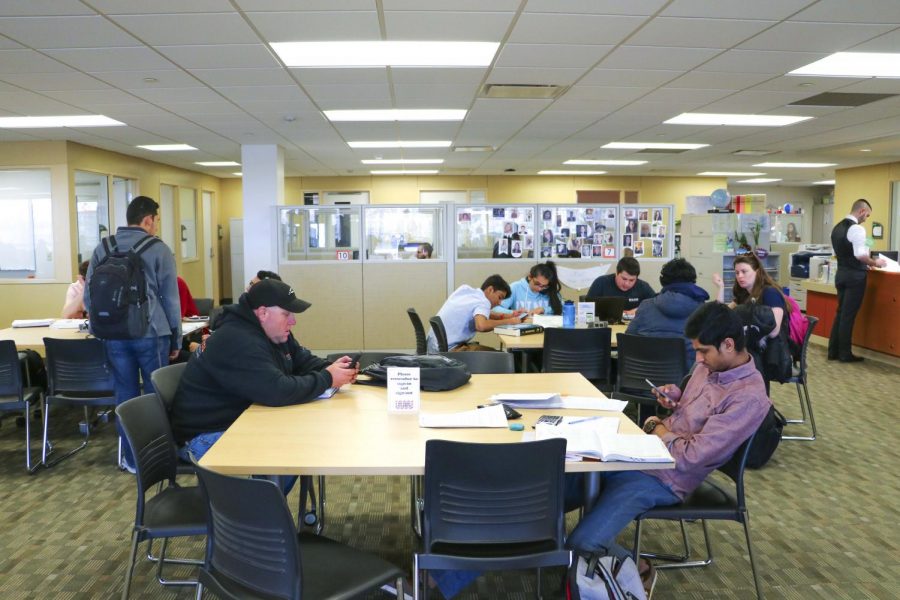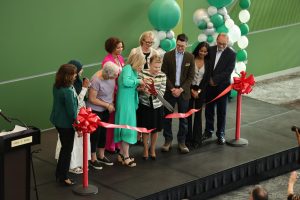In Defense of the ‘Lecture’: The Pros, the Cons, and the Personal Responsibility
April 26, 2018
I first stepped into an amphitheater classroom almost 12 years ago. If you asked that fresh-faced version of myself what I thought of the lecture-style academic setting, I probably would have mixed feelings. I certainly don’t think I would be jumping to defend it. Now, after attending university, participating in an online graduate study program, and spending a semester at College of DuPage (COD), the benefits and pitfalls of the college ‘lecture’ have become clearer. More importantly, I’ve come to realize how much responsibility I personally have in ensuring my learning experience is as successful as it can be.
On March 30, 2018, Science magazine published a 10-year study of more than 550 lecturers across 25 universities in Canada and the U.S. The 30 researchers involved were looking into the success, or lack thereof, of learning strategies in STEM classes specifically. One conclusion they reached, which subsequently became the focus for many articles on the report, was that lectures just don’t work for most students. Proceedings of the National Academy of Sciences (PNAS) produced an analysis of the study. Researchers found, “on average, students in traditional lecture courses are 1.5 times more likely to fail than students in courses with active learning.”
The didactic method of teaching, where students are provided with the theoretical knowledge on a subject, often through lecture, continues to be a popular method in facilities of higher learning. The study found this style of teaching did not effectively engage students in active learning, with infrequent questions to students and not enough group work or student-centered activity. I found myself agreeing with this. I also found this was not reflective of the overall learning experience colleges try to provide students. Although lectures prevail, many professors and colleges are earnestly trying to encourage students to engage with the subject matter in so many other ways. Unfortunately, much of this requires students actually choosing to participate.
I don’t think it is fair to completely dismiss the lecture experience. During my online graduate study, I sorely missed the opportunity to sit in a classroom and hear the dry material from the textbook magically made clear when explained by a seasoned educator. With that said, I do recognize the opportunity to attend lectures should not negate the need to read the textbook, review the PowerPoints and re-engage with the material on your own time. For years I have watched other students around me in the classroom lean back and simply absorb the material presented. Perhaps this works for some, but without taking down notes and reading the related chapters many of us (let’s be honest) will struggle to retain much of what is being taught in this setting. A professor should not be expected to chisel their way into our brain and deposit the necessary knowledge in a single one-to-three-hour class, without any involvement from the student aside from being physically present.
In university, and at COD, I have seen opportunities for group work occasionally presented, but it would be naïve for a researcher to suggest the opportunity alone led to legitimate student engagement. Many of us dread group projects. There is no guarantee everyone will participate. Similarly, professors often provide ample opportunities for students to ask questions, but students fail to do so.
STEM subjects require more hands-on teaching and learning experiences, but this will never be the entirety of what is provided. There is generally not enough space, not enough materials and not enough funding. To dismiss the value of the lecture, or to hold the school or professor completely accountable for student failures, is unfair. The college experience is not supposed to be like high school. It is supposed to be a place of learning, without the same hand-holding, as a transition into the harsh realities of the work place and adult life. Generally, in life people will do what they can to help when you ask for it. But you must first seek to help yourself.
Many professors will bend over backwards to provide assistance or tell students where to go for extra help. Ultimately, there is only so far backwards that any one person can bend, especially when many professors are adjunct faculty who may also have other jobs. Colleges and universities advertise their tutoring programs, seminars and workshops, all created to boost student success. They cannot force students to show up. In my semester here at COD, I have attended multiple weekend seminars, peer tutoring sessions and a Writing, Reading, Speech Assistance (WRSA) Workshop. All of these are provided for free, and some have allowed me to earn extra credit.
Sandra Marchetti is a tutoring services coordinator in the COD learning commons. She agrees self-advocating and taking ownership is vital to successful education.
“It’s their education at the end of the day,” Marchetti said.
Marchetti said COD, as a community college, is designed to provide more support for students than a traditional 4-year college. There is more of a focus on bringing service to the student. There are tutoring services in every building, taking place 60 hours a week, and covering every subject matter. There are also embedded tutoring services, which literally bring the assistance to the classroom. Marchetti acknowledged there is a difference between the current trend of “intrusive advising,” where schools are more involved in trying to motivate students to seek the help they need, and “intrinsic motivation,” where students are personally interested in seeking out that help on their own.
“A sense of curiosity and a willingness to learn something will take you a long way,” Marchetti said. “We try to help the student unlock the passion for whatever they’re studying. In the end, nothing can beat a student actually caring.”
No student learns in the same way as any other. No class can accommodate the needs of everyone. It is our individual responsibility to find the method of learning that works best for us and to capitalize on the resources available.
A once-popular theory said learning styles could be defined into one of 7 categories: visual, aural, physical, logical, social or solitary. I believe a mixture of some or all of these strategies makes sense. Experimenting with different styles of learning would benefit us all. I love to use color, to create posters and to aggressively highlight my materials. I love to rewrite and reread my notes, especially when flashcards are involved. I benefit greatly from in-class discussions, but I do not enjoy practical in-class activities. I prefer to work alone on projects, but, when studying for exams, I love to work in groups. I also need to create a ‘study space’ away from my bedroom, in a well-lit and quiet environment. It took time to hone in on my own style of learning to create my personal strategy for study. Now I have that knowledge I find I am much more productive.
This can be true for every student and every kind of learner. More funding, more materials and smaller classrooms are beneficial, they are not always available or realistic. It is our responsibility to make the most of the educational experience we pay for. This is not something a professor or a college alone can do for us. It must be something we figure out, and do, for ourselves.


















